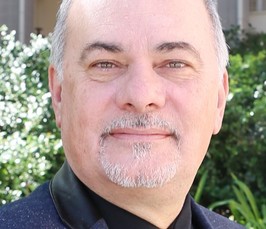New Generation of Atomically Dispersed Electrocatalysts
- Date: Jul 5, 2022
- Time: 04:00 PM (Local Time Germany)
- Speaker: Prof. Dr. Plamen Atanassov
- Department of Chemical & Biomolecular Engineering, University of California, Irvine
- Location: Building M, Richard-Willstätter-Haus, Faradayweg 10, 14195 Berlin
- Room: Seminar Room
- Host: Interface Science Department
- Contact: nikolaus@fhi-berlin.mpg.de

Over the last decade or so (while at the University of New Mexico), our team has developed the Sacrificial Support Method (SSM) as a main approach for templated synthesis of hierarchically structured electrocatalysts materials. In this method the catalysts precursors are being absorbed on, impregnated within or mechanically mixed with the support (usually mono-dispersed or meso-structured structured silica), thermally processed (pyrolyzed) and then the silica support is removed by etching to live the open frame structure of a “self-supported” material that consists of the catalysts only.
The
makeup and structure of the active site/sites of the PGM-free ORR
electro-catalysts, including geometry (coordination) and chemistry (composition
and oxidation state) remain contentious
even after 50 years of research. There is an emerging agreement that iron and
nitrogen functionalities, displayed on the surface if the carbonaceous
substrate/support, govern ORR activity. This is
often combined with a broadly accepted hypothesis that micro-porous
surface area plays a critical role forming the active site. Candidate structures participating in ORR include
multitudes of nitrogen defect motifs in the carbon matrix of different degrees
of graphitization, with metal incorporated as metal nano-particles,
corresponding (native) oxides and/or as atomically dispersed, oxidized metal
species, linked (coordinated) to nitrogen defects in carbonaceous matrix in a
variety of possible configurations. This presentation will
attempt to address rational design and performance metrics of M-N-C
electrocatalyst based on a broad experimental set of data. Scientific and engineering technology challenges
will be discussed in the context of maturtion of Polymer Electrolyte Fuel Cells
(PEMFC) and their market penetration.
This lecture will
review the applications of this new class of electrocatalyst across several
fuel cell applications: from automotive to microbial and from regenerative
electrolyzer/ fuel cell units to water purification and de-salination devices. These
catalysts allowed also broad introduction of state-of-the art electrochemical
technology in microbial electrochemical devices: microbial fuel cells,
bio-electrochemical electrolyzers and advanced water treatment technologies.
New/emerging directions
for extending these materials types to catalysis of CO2
electro-reduction and N2 low temperature, low pressure
electro-reduction aiming potentially at electrochemical ammonia synthesis will
be discussed as well.
Biography
Plamen Atanassov graduated from the University of Sofia (1987) specializing in Chemical Physics & Theoretical Chemistry. He joined the Bulgarian Academy of Sciences (BAS) and become a Member of Technical Staff of its Central Laboratory of Electrochemical Power Sources (now the Institute for Electrochemistry & Power Systems). His initial work included materials solutions for metal-air batteries. He was a visiting scientist at the Frumkin’s Institute of Electrochemistry, Moscow, Russia studying bio-electrochemistry of enzymes and received a PhD in Physical Chemistry/ Electrochemistry from BAS.
Dr. Atanassov moved to the United States in 1992 and became a research faculty with the University of New Mexico (UNM). During the 90s he was involved in development of a several electrochemical biosensor technologies for biomedical, environmental, food safety and defense applications. In 1999 Plamen Atanassov joined Superior MicroPowders LLC (acquired later by Cabot Corp.), were he was a project leader in fuel cell electrocatalysts development and introduced spray pyrolysis for catalyst synthesis on industrial scale. He returned to UNM in 2000 as faculty member of the Chemical & Nuclear Engineering department. In 2007 Dr. Atanassov founded the UNM Center for Emerging Energy Technologies (CEET). From January 2012 to December 2013 Dr. Atanassov was the Associate Dean for Research of the UNM School of Engineering. July of 2015 Dr. Atanassov was promoted to a Distinguished Professor of Chemical & Biological Engineering and Chemistry & Chemical Biology. From January 2015 to September 2018 he served as director of the UNM Center for Micro-Engineered Materials (CMEM).
Starting October 2018 Dr. Atanassov joined
University of California, Irvine where he is a Chancellor’s Professor with
Samueli School of Engineering, with the newly formed Department of Chemical
& Biomolecular Engineering, holding secondary appointments with Materials
Science & Engineering and with Chemistry. He is also affiliated with Los
Alamos National Laboratory and is honorary professor of The Bulgarian Academy
of Sciences. He served as a Vice-President of the International Society of
Electrochemistry (2015-17). In 2018 he was inducted in the National Academy of
Inventors. In 2019 Dr. Atanassov received ECS Energy Technology Division Award
for his work on Platinum Group Metal-free (PGM-free) electrocatalysts. He is
Fellow of both: The Electrochemical Society (2018) and the International
Society of Electrochemistry (2020).